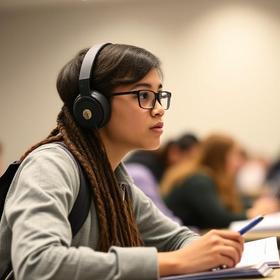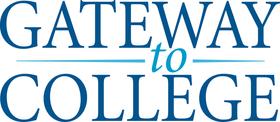Balancing Work, Family & Classes: Hybrid & Evening Options at Community Colleges for 2025-26
For many community college students in 2025-26, the juggling act of work, family life, and academic commitments is not hypothetical—it is reality. As more adults, parents, and working professionals turn to community colleges for upskilling, finishing degrees, or pursuing new credentials, demand continues to grow for flexible scheduling options. Hybrid and evening programs, once fringe offerings, have now become central strategies for community colleges seeking to support nontraditional learners.
This article explores how hybrid and evening modalities help students balance work, family, and classes; examines recent trends; outlines the advantages and challenges; and offers guidance for students, parents, and educators in planning for the year ahead.
Why Flexibility Matters Now
Changing Demographics & Student Needs
Hybrid enrollment in U.S. higher education surpassed 5 million students in 2023 and is projected to expand as institutions respond to growing demand for flexible formats (Eduventures/Encoura). Many community colleges now advertise “hundreds” of online, hybrid, and evening/weekend courses to fit student schedules.
As student populations shift toward older, working, or caregiving demographics, fixed daytime schedules are less viable. Institutions are adapting accordingly.
Work–Family Pressures & the “Time Squeeze”
Academic studies underscore how “mental load,” household responsibilities, and hidden organizational burdens amplify stress for working students. A 2025 paper found that balancing work and family demands without institutional support can lead to fatigue and dropout risks (arXiv preprint).
Providing flexible class formats is necessary but not sufficient. Support structures, equitable household load-sharing, and institutional policies (childcare, advising) are equally vital to student success.
Hybrid & Evening Modalities: What They Look Like
Hybrid (Blended) Courses
Hybrid courses mix online and in-person instruction. At many community colleges:
50-85% of coursework may be online, with the remainder in on-campus sessions.
Labs, studios, and hands-on elements typically require in-person attendance.
Some institutions brand these as “blended” or “flexible” formats, allowing students to choose attendance modes week to week.
Evening & Weekend Programs
These programs compress or shift class times to after business hours or on Saturdays. Middlesex College, for example, offers evening pathways in business, liberal arts, and criminal justice (Middlesex College).
Some states promote evening schedules statewide to support working adults. In Montana, evening and night classes are advertised as core flexible learning options (Apply Montana).
Comparison: Hybrid vs Evening
| Feature | Hybrid | Evening / Weekend |
|---|---|---|
| In-person requirement | Varies (e.g. 1–2 sessions/week) | Usually during evenings or weekends |
| Daytime flexibility | High | Very high |
| Family conflict risk | Lower (meets on campus less often) | Lower (outside of daytime caretaking) |
| Access for commuting students | Easier (fewer trips) | Also easier (after-hours) |
| Resource demands | Online infrastructure required | Faculty/staffing off-hours |
Benefits & Challenges for Students and Families Key Benefits
Time Management & Scheduling Flexibility
Evening and hybrid courses let students work during the day and study at night.Reduced Commuting & Childcare Conflicts
Fewer on-campus visits mean less time lost in transit and easier scheduling for parents.Retention & Persistence Gains
Flexible courses tend to fill quickly, reflecting demand among motivated learners.Appeal to Adult Learners
Entire programs are now designed around hybrid or evening delivery to meet workforce needs.
Central Challenges
Self-Discipline & Motivation are critical to success in hybrid formats.
Risk of Burnout when balancing full-time work, caregiving, and academics.
Digital Equity issues persist for students without reliable internet or devices.
Instructor & Scheduling Constraints make staffing off-hour courses complex.
Strategies for Students & Families to Succeed
Before You Enroll
Audit your weekly schedule for realistic time blocks.
Start small with one hybrid or evening class.
Meet with an advisor to map degree plans around flexible offerings.
Check technology readiness—reliable internet and a suitable device are essential.
During the Semester
Use time-blocking to separate work, family, and study hours.
Build accountability systems through peer study groups.
Tap into campus supports such as tutoring and counseling.
Protect downtime to minimize burnout.
For Families & Partners
Share household duties to free up study hours.
Adjust routines (meals, childcare, chores) around class times.
Reassess each semester to adapt to workload changes.
Institutional Best Practices & Innovations
To make hybrid and evening options truly effective, community colleges can:
Provide childcare partnerships or subsidies for parents.
Offer loaner laptops and Wi-Fi hotspots for digital access.
Train faculty in hybrid pedagogy and adult learner needs.
Monitor scheduling equity to ensure evening courses are consistently available.
Looking Ahead: Trends for 2025–26 and Beyond
Hybrid growth is expected to continue, particularly in workforce-aligned programs.
Evening degree pathways are expanding in states seeking to serve working adults.
Equity in access—from digital tools to childcare—will remain a pressing challenge.
Institutions that combine flexibility with strong support services will set the standard for community college innovation.
Conclusion
Hybrid and evening offerings at community colleges have moved from optional to essential as more students juggle work and family alongside academic goals. For 2025–26, success depends not only on scheduling flexibility but also on support systems—academic, technological, and familial.
For students, the key is strategic planning and honest capacity assessment. For colleges, the challenge lies in designing programs that are not only accessible but equitable. Done right, hybrid and evening classes serve as lifelines for learners building toward brighter futures.












